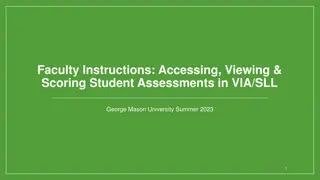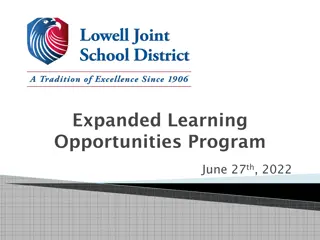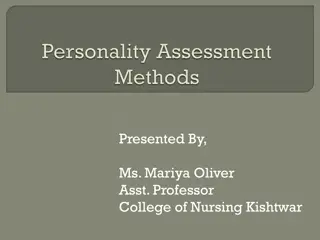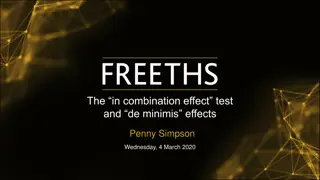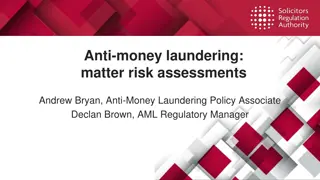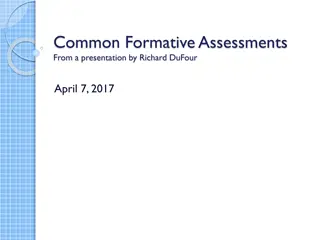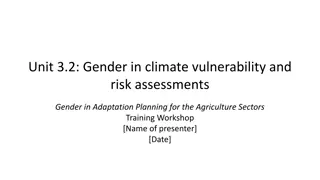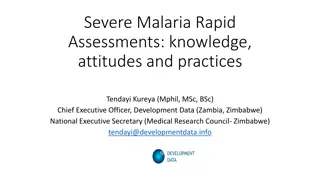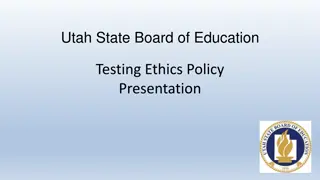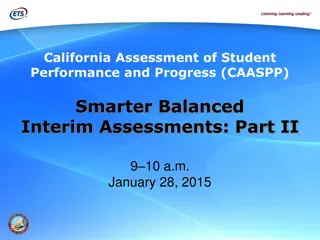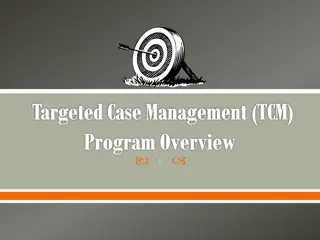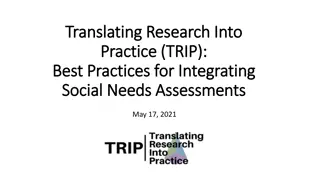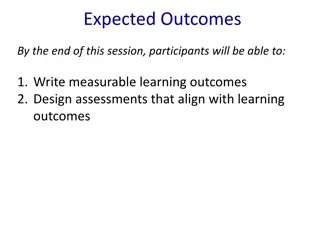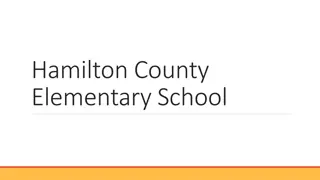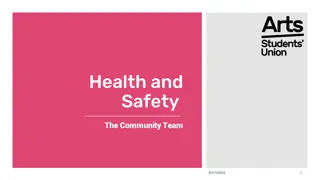Understanding Needs Assessments for Effective Program Development
Explore the importance of conducting needs assessments to identify community needs and assets, gain a deeper understanding of contexts, and effectively plan programming. Learn about the steps involved, key points to consider, and resources available for successful needs assessments.
Download Presentation

Please find below an Image/Link to download the presentation.
The content on the website is provided AS IS for your information and personal use only. It may not be sold, licensed, or shared on other websites without obtaining consent from the author. Download presentation by click this link. If you encounter any issues during the download, it is possible that the publisher has removed the file from their server.
E N D
Presentation Transcript
Needs Assessments Needs Assessments Kadi Row & Jenna Klink Evaluation and Program Development Specialists Division of Extension November 4, 2019
Overview of todays content Overview of today s content The what and why of needs assessments 3 main steps to conducting a needs assessment Further tips and resources
5 key points 5 key points They are not a one and done They are collaborative efforts It s important to have multiple sources Assets are as important as needs There is help!
Rad Resource Rad Resource
Why/when have you done a needs Why/when have you done a needs assessment? assessment?
What is a needs assessment? What is a needs assessment? Process to identify what people/communities need and what assets exist Used to focus a response Not just a one and done Credit: Needs Assessment Guidebook for Extension Professionals 2016. Donaldson & Franck. Univ. of Tennessee Extension PB 1938
Why needs assessment? Why needs assessment? Gain deeper understanding of the community Understand the context in a more objective way Identify both needs and assets Effectively plan your programming, focus your response
Understand the context Seek to understand the issue, opportunity, or situation from multiple perspectives. What is the issue, opportunity, or situation? Who is defining this? Who should be? What things are assumed to be true about the context? What is the context surrounding the issue, state of affairs, opportunity, and situation?
Whos needs? Who s needs? A particular audience (Farmers? Families?) A particular geography (County? Community?) Interface with other key players/stakeholders
3 Steps to a Needs Assessment 3 Steps to a Needs Assessment Step 1: Exploration of existing data Keep your exploration focused on the purpose of your needs assessment What do you (or others) already know? Do you need additional information? Who else needs to be involved? Consider a Needs Assessment Committee Credit: Needs Assessment Guidebook for Extension Professionals 2016. Donaldson & Franck. Univ. of Tennessee Extension PB 1938
Using an Need Assessment Committee for Using an Need Assessment Committee for needs assessment needs assessment Who should be involved? What is their role?
3 Steps to a Needs Assessment 3 Steps to a Needs Assessment Step 2: Assessment What new data do you need? Who do you commonly get data on needs from? Who aren t you currently reaching and how might your learn from them? What methods will help you get it? Credit: Needs Assessment Guidebook for Extension Professionals 2016. Donaldson & Franck. Univ. of Tennessee Extension PB 1938
All methods have strengths and limitations All methods have strengths and limitations Credit: Needs Assessment Guidebook for Extension Professionals 2016. Donaldson & Franck. Univ. of Tennessee Extension PB 1938
3 Steps to a Needs Assessment 3 Steps to a Needs Assessment Step 2, con t.: Assessment Don t collect information that you don t intend to use Use multiple methods to triangulate Pilot your methods Document what you are learning Credit: Needs Assessment Guidebook for Extension Professionals 2016. Donaldson & Franck. Univ. of Tennessee Extension PB 1938
3 Steps to a Needs Assessment 3 Steps to a Needs Assessment Step 3: Utilization This is the concrete tie to program planning Use what you learn to set program priorities Develop educational response Credit: Needs Assessment Guidebook for Extension Professionals 2016. Donaldson & Franck. Univ. of Tennessee Extension PB 1938
Cautions and caveats in utilization Cautions and caveats in utilization Disregarding issues Allowing undue influence Focus was too narrow or too broad Relying on only one data source Credit: Needs Assessment Guidebook for Extension Professionals 2016. Donaldson & Franck. Univ. of Tennessee Extension PB 1938
Resources to help you Resources to help you Planning Worksheet Planning Worksheet
Resources to help you Resources to help you PDE website UW-Madison, Division of Extension Needs Assessment Guidebook UTenn Extension Program Development & Evaluation Specialists Josset Gauley (CD and PYD) Jenna Klink (HDR) Kadi Row (AG and NR) Shannon Sparks (HWB) Colleagues in Extension Office of Access, Inclusion, and Compliance Your Program Manager
Role of Program Manager Role of Program Manager It s a 2-way street Program Manager: Can help develop methods/tools for needs assessments Provides guidance for programmatic response Local Educators: Have local insights to inform Program/Institute plans Understand your audience/community
5 key points about Needs Assessments 5 key points about Needs Assessments They are not a one and done They are collaborative efforts It s important to have multiple sources Assets are as important as needs There is help!
Assessment poll Assessment poll



